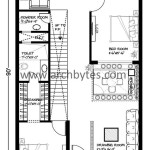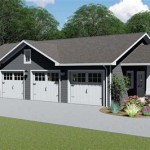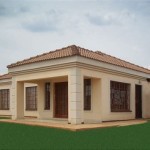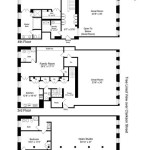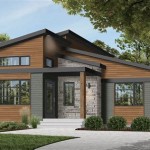Essential Considerations for Handicap Accessible Small Home Plans
Creating a safe, comfortable, and accessible home environment for individuals with disabilities is paramount. When designing small home plans, incorporating handicap accessibility is essential to ensure a high quality of life for all occupants. Here are some key aspects to consider:
1. Entrance and Access:
Ensuring easy and safe entry is crucial. Wide doorways (36 inches or wider) with ramps or zero-threshold entrances provide smooth access for wheelchairs and mobility devices. Automatic door openers can enhance convenience.
2. Interior Layout:
Spacious rooms and wide hallways (42 inches or wider) allow for easy navigation. Open floor plans minimize obstacles and create a welcoming atmosphere. Consider installing handrails in critical areas for support and stability.
3. Kitchen Accessibility:
Design kitchens with adjustable countertops, pull-out shelves, and accessible appliances. Create a dedicated space for wheelchairs that allows for maneuvering and food preparation. Under-sink storage and easy-to-reach cabinets ensure functionality.
4. Bathroom Design:
Roll-in showers with grab bars, non-slip surfaces, and adjustable showerheads provide safety and convenience. Install raised toilets with grab bars and consider wider doorways for wheelchair access. Accessible bathroom sinks and vanities should be at an appropriate height.
5. Lighting:
Ensure adequate natural and artificial lighting throughout the home. Place light switches at reachable heights and consider installing motion-activated lighting in key areas for added convenience and safety.
6. Flooring:
Choose slip-resistant flooring materials that are easy to navigate. Avoid using high-pile carpets that can hinder wheelchair movement. Hardwood floors or smooth vinyl are ideal options.
7. Smart Home Features:
Incorporate smart home technology to enhance accessibility. Voice assistants can control lights, adjust thermostats, and open doors. Smart devices can also provide alerts and emergency assistance.
8. Outdoor Accessibility:
Ensure accessible outdoor spaces with ramps or gradual slopes for wheelchair access. Provide shaded areas and seating for comfort and relaxation. Consider installing accessible gardening beds or raised planters.
9. Building Code Compliance:
Adhere to the American with Disabilities Act (ADA) guidelines and local building codes for handicap accessibility. Consulting with a professional architect can help ensure compliance and create a safe and accessible home.
By incorporating these essential aspects into small home plans, you can create a truly accessible living environment that empowers individuals with disabilities and enhances their overall well-being.

Wheelchair Accessible Small House Plans Drummond

798 Sq Ft Wheelchair Accessible Small House Plans Tiny

Small Space Accessibility Accessible Homes House Plans Design

Wheelchair Accessible Small House Plans Drummond

Wheelchair Accessible Small House Plans Drummond

798 Sq Ft Wheelchair Accessible Small House Plans Tiny

Small Space Accessibility Accessible Homes

How To Make Your Home Wheelchair Accessible

Pin On Be It Ever So Humble

How To Make Your Home Wheelchair Accessible

